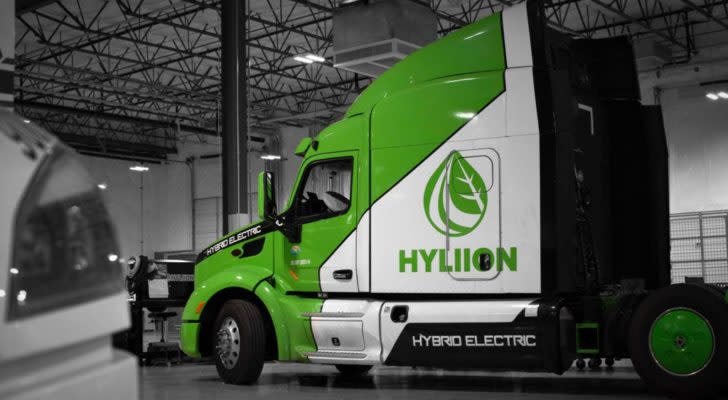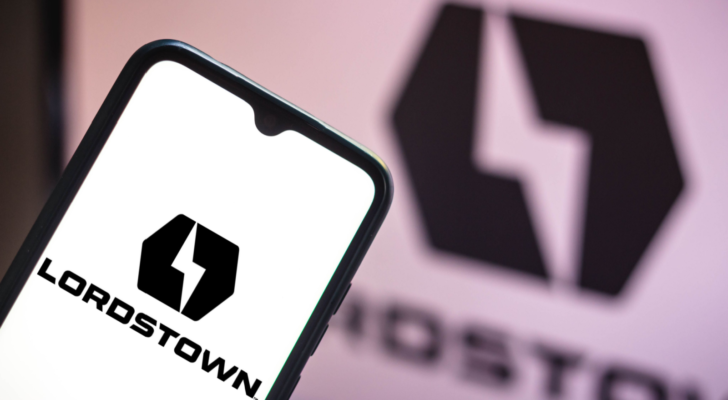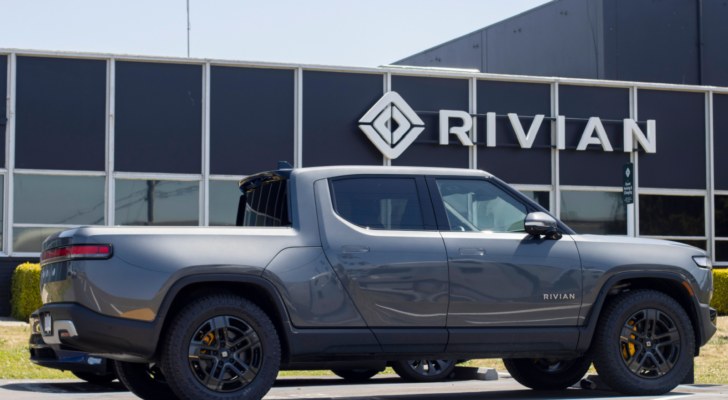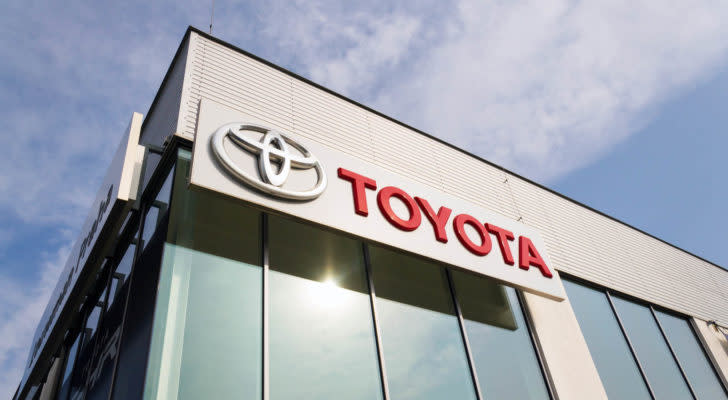The market’s increasing unwillingness to speculate is a warning for investors to look for EV stocks to sell.
The persistently high inflation will force central banks to keep interest rates at current levels of nearly 5.0%. Risk-averse investors are better off holding cash than speculating on sectors that make no money.
On the business side of EVs, money-losing companies could raise money by tapping the hot stock market or by selling debt back when interest rates were almost 0%. Without credit to cover losses, markets will brace for bankruptcy risks. This increases the chances of the bubble losing more air, which is why you should be aware of which EV stocks to sell.
InvestorPlace – Stock Market News, Stock Advice & Trading Tips
Tesla (NASDAQ:TSLA) is the early adopter in the electric vehicle market that has too strong a moat. Tesla built a network of supercharging networks over the years, established its supply chain, and forced favorable supply deals for batteries and raw materials.
By achieving economies of scale first, no other company can pivot to mass-market EV sales as Tesla did which is why these are the EV stocks to sell before the bubble pops.
|
Fisker |
$7.12 |
|
|
Hyliion Holdings |
$2.86 |
|
|
Lucid Group |
$8.48 |
|
|
Lordstown Motors |
$0.99 |
|
|
Rivian Automotive |
$15.66 |
|
|
Toyota Motor |
$136.67 |
|
|
Workhorse Group |
$1.79 |
Fisker (FSR)

Source: T. Schneider / Shutterstock.com
Fisker (NYSE:FSR) faces falling orders after Tesla cut prices. Priced as low as $37,499, consumers could buy the base model Tesla instead. They would benefit from an established vehicle, instead of waiting to beta-test a Fisker Ocean upon its first deliveries.
Fisker’s key supplier, Magna International (NYSE:MGA), said that it expected continued OEM production schedule volatility. Magna faces more inflationary input cost impacts this year.
Fisker investors should expect that the ongoing chip shortage will disrupt Fisker EV production. This increases profit margin pressure on the supplier. Magna may demand that Fisker pay higher prices for building the vehicle.
Fisker cannot pass the higher costs to customers. Doing so might encourage them to cancel their booking. It could reduce production as customers slow their EV adoption rates.
Fisker is at the top of the list of EV stocks to sell. It has a high need for capital as it delivers its first units. After fulfilling initial orders, demand could fall further.
Hyliion Holdings (HYLN)

Source: Hyliion media
Hyliion Holdings (NYSE:HYLN) benefited from the market’s general rally in 2023. Selling accelerated as shorts held a 9.49% short interest against the designer of electrified powertrain solutions for the commercial vehicle industry.
On Jan. 25, Hyliion announced that DSV, a global transportation firm, ordered 10 Hyliion Hypertruck ERX units. DSV will deploy the units into its operations to advance its low-carbon initiatives.
Astute investors will immediately notice that this is a very small unit order. Trading at a market capitalization of around $650 million at the time, the company will need bigger orders.
Hyliion reported only $500,000 in revenue in the third quarter. Expenses totaled $62.9 million, due primarily to its research and development expenses. After it lost $63.4 million in that period, the $455 million in cash and marketable investments suggests it has enough funds for the next seven quarters.
Without any near-term prospects for profit, this is one of the EV stocks to sell while you can.
Lucid Group (LCID)

Source: Around the World Photos / Shutterstock.com
Lucid Group (NASDAQ:LCID) said it exceeded annual production guidance when it produced 3,493 vehicles. It touted its $4.9 billion in total liquidity and guided the production of 10,000 to 14,000 vehicles in 2023.
Lucid’s nine-fold increase in revenue, to $257.7 million in Q4, resulted in a 28-cent per share loss. By burning $472.6 million in the quarter, the company has only 10 quarters of cash left. This assumes that costs stop rising and revenue grows at the same rate.
Chief Executive Officer and Chief Technology Officer Peter Rawlinson said that lucid has 28,000 reservations but warned that this does not guarantee delivery.
On the conference call, the CEO emphasized its advantageous technology. It is available to other automakers and customers and has a wide range of applications.
Without offering any revenue forecasts from its addressable market, the technology strength does not mean much.
Lordstown Motors (RIDE)

Source: rafapress / Shutterstock.com
Lordstown Motors (NASDAQ:RIDE) slumped when it issued a voluntary recall. The production and delivery pause will address quality issues.
Although the recall affected only 19 vehicles, it only produced 31 vehicles so far. This announcement undermines its target of producing over 50 units in 2023. It has a planned first batch of 500 units.
Bears are well-aware of Lordstown’s multiple challenges ahead. Besides quality problems, it is unable to ramp up production. The short float is 20%.
For the first quarter, the company expects a slow rate of production. It blamed supply chain constraints, citing the limited availability of hub motor components.
In the third quarter, Lordstown lost $154.8 million. It ended the quarter with only $204 million in cash. Investors should brace for Lordstown selling shares to raise funds and to continue operations.
When analyst Mark Delaney asked if the company would find partners to build the Endurance model, CEO Edward Hightower said that they have ongoing discussions.
Without a firm partnership deal to meet production targets, this is an EV stock to sell.
Rivian Automotive (RIVN)

Source: Tada Images / Shutterstock.com
Rivian Automotive (NASDAQ:RIVN) lost key executives who played a key role in R&D. This is a sign that the EV pickup truck supplier will slow product innovation.
Randy Frank, the vice president of body and interior engineering left Rivian. Steve Gawronski, who led the parts purchasing and supply chain, also left. Optimistic shareholders may point to Rivian’s business focus shift. It needs to shift its talent and staff to achieve higher production.
In addition, Rivian has increasing supply chain complexities ahead. It needs a better supply chain and logistics to produce more units.
The longer it takes for Rivian to increase output, the longer shareholders need to wait for economies of scale. In the last quarter, the company lost $1.57 a share (non-GAAP). It expects 2022 production of 25,000 total units. Cautious investors should wait for Rivian to meet expectations. Until then, this is an EV stock to sell shares now.
Toyota Motor (TM)

Source: josefkubes / Shutterstock.com
Toyota Motor (NYSE:TM) hesitated in developing a full EV lineup. After CEO Akio Toyoda stepped down, the company said that the time is right to accelerate battery-electric vehicle development.
The company will now shift to electric and hydrogen-powered cars after its core business weakened. In the near term, Toyota needs to manage past supply disruptions which hurt results.
In the third quarter, profits fell by 8.1% due to a global shortage of computer chips and higher input costs. It will mitigate the chip shortage by trying to find other suppliers.
The company said at its last conference call that it would pause and reexamine its production structure. It will take time to develop its production plan. While it reiterated a target of producing 9.55 million units, the supply chain disruption is an ongoing risk for investors.
TM stock trades at a price-to-earnings of around 10 times. Markets might avoid Toyota as it transitions to EVs. Until then, the stock could stay in value territory in 2023, offering no upside from here.
Workhorse Group (WKHS)

Source: rblfmr / Shutterstock.com
Workhorse Group (NASDAQ:WKHS) develops zero-emission commercial vehicles. It highlighted the sale of its first Class 4 vehicle in its third-quarter earnings report.
It reported revenue of $1.5 million, compared to costs of $9.5 million. Workhorse announced a new business platform called ‘Stables & Stalls.’
Ongoing losses will weigh on this EV stock to sell. The new platform does not describe how it will increase revenue for Workhorse. The platform’s objective is to “address the unmet needs of small fleet operations. This includes providing charging infrastructure and service solutions.
The charging network business is just as competitive as the EV automotive sector. It is capital-intensive and requires investments. Workhorse had around $120 million in cash and cash equivalents at the end of Sept. 30, 2022. It would likely need to issue debt or sell the stock, diluting existing shareholders, to build on the Stables and Stalls platform.
The short float is almost 26%. Since bears are betting heavily against Workhorse, investors should avoid its stock.
On the date of publication, Chris Lau did not have (either directly or indirectly) any positions in the securities mentioned in this article. The opinions expressed in this article are those of the writer, subject to the InvestorPlace.com Publishing Guidelines.
Chris Lau is a contributing author for InvestorPlace.com and numerous other financial sites. Chris has over 20 years of investing experience in the stock market and runs the Do-It-Yourself Value Investing Marketplace on Seeking Alpha. He shares his stock picks so readers get actionable insight to achieve strong investment returns.
More From InvestorPlace
The post 7 Stocks To Dump Before the EV Bubble Loses More Air appeared first on InvestorPlace.